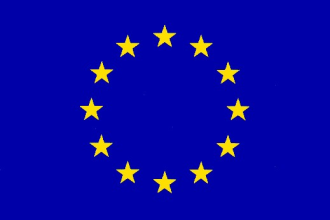Trade remedies are legal measures employed by countries to offset the adverse effects caused by unfair trading practices. These practices include dumping, which involves exporting goods at prices below their market value, as well as subsidies granted by governments to overseas industries, leading to distortions in trade. Additionally, sudden surges in imports can disrupt domestic markets and necessitate appropriate responses. Trade remedies are designed to prevent or rectify these imbalances, safeguard domestic industries, and foster fair competition.
Types of Trade Remedies:
-
Anti-Dumping Measures: Dumping occurs when products are sold in another country at prices lower than their fair value, thereby creating a significant threat to domestic industries. To address this, countries may impose anti-dumping duties on the dumped goods to raise their prices and restore fair competition.
-
Countervailing Measures: Countervailing duties are implemented to counter the unfair advantage gained by foreign industries due to subsidies provided by their governments. These measures neutralise the impact of the subsidies and protect domestic industries from harm.
-
Safeguard Measures: Safeguard measures are temporary import restrictions enacted in response to sudden surges in imports that threaten domestic producers. These measures aim to provide time for affected industries to adjust, recover, and maintain sustainable growth.
Significance of Trade Remedies:
Trade remedies play a crucial role in fostering fair trade practices and protecting domestic industries for several reasons:
-
Ensuring Fair Competition: By addressing unfair practices such as dumping and subsidies, trade remedies protect domestic industries from distortions and safeguard fair competition in the global marketplace.
-
Promoting Economic Stability: By countering sudden import surges through safeguard measures, trade remedies help maintain economic stability by preventing market disruptions and allowing affected industries to regain their competitive position.
-
Preserving Jobs and Industries: Trade remedies contribute to protecting domestic jobs and industries from undue harm caused by unfair trade practices. This, in turn, sustains economic growth and supports overall national development.
-
Encouraging Negotiation and Cooperation: Trade remedies can stimulate dialogue and negotiations between countries engaging in unfair trade practices, promoting cooperation and encouraging the abandonment of such practices.
Compliance with trade remedies involves several steps to ensure that countries adhere to the regulations and requirements imposed by these measures. The specific steps may vary depending on the type of trade remedy being applied and the domestic laws and regulations of the implementing country. However, the following are general steps that are typically taken to comply with trade remedies:
-
Investigation and Initiation: The first step in complying with trade remedies is the initiation of an investigation by the country considering the application of such measures. This involves gathering evidence and data to determine if there are unfair trade practices occurring, such as dumping, subsidies, or import surges.
-
Notification and Consultation: Once the investigation is underway, countries are often required to notify the affected trading partners and relevant international organisations, such as the World Trade Organization (WTO) or regional trade agreements, about their intention to apply trade remedies. This provides an opportunity for consultation and discussion among the parties involved.
-
Evidence Submission and Verification: During the investigation, interested parties, including domestic industries and foreign exporters, have the opportunity to submit evidence supporting their positions. The investigating authority assesses the evidence provided and verifies its accuracy and relevance.
-
Determination and Imposition of Measures: Based on the investigation findings, the country's authorities make a determination on whether to impose trade remedies. This decision involves assessing whether the unfair trade practices have caused material injury or threaten to cause injury to domestic industries. If a decision is made to apply trade remedies, the specific measures are determined, such as anti-dumping duties, countervailing duties, or safeguard measures.
-
Implementation and Monitoring: After the decision to impose trade remedies has been made, the authorities implement the measures and monitor their effects. This includes collecting duties, enforcing import restrictions, or overseeing compliance with other requirements established by the trade remedy.
-
Review and Sunset Reviews: Trade remedies are not meant to be permanent measures, and their duration is typically limited. Regular reviews, including sunset reviews, are conducted to reassess the need for the measures and their effectiveness. These reviews provide an opportunity to terminate or modify the trade remedies if the conditions that warranted their application no longer exist.
-
Dispute Settlement: In some cases, trade remedy actions may lead to disputes between trading partners. Dispute settlement mechanisms, such as those available at the WTO, can be utilised to address and resolve these disputes, ensuring compliance with international trade rules.
It is important to note that the specific steps and procedures may differ among countries and trade remedy systems. Compliance with trade remedies requires adherence to the national regulations and international agreements governing trade remedies, ensuring transparency, fairness, and the protection of the rights of all parties involved.
Trade remedies are essential tools for ensuring a level playing field and fair competition in international trade. By addressing unfair practices such as dumping, subsidies, and sudden import surges, they help protect domestic industries, maintain economic stability, and preserve jobs. However, it is crucial to strike a balance between the use of trade remedies and the overarching goal of promoting free trade and global economic integration. Finding equitable solutions that benefit all parties involved remains a continual challenge as countries strive for a sustainable and fair global trading system.


